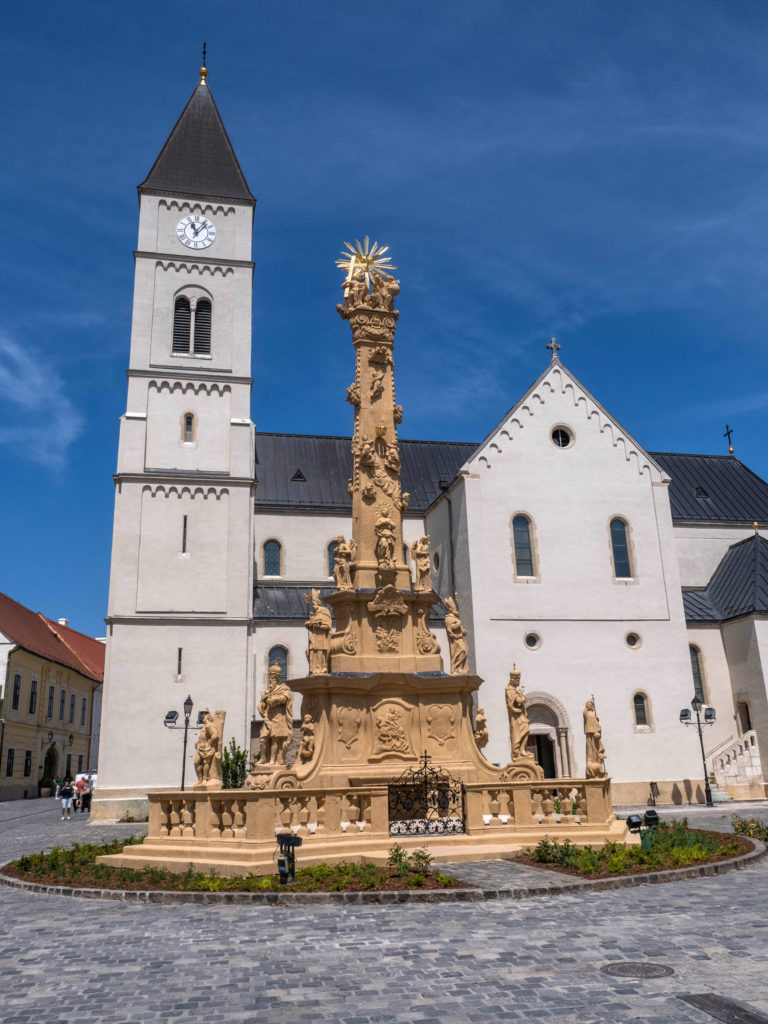Situated in one of the most beautiful and spectacular spots in the castle quarter, the square is surrounded by the Cathedral, the Saint Stephen's Church, the Archiepiscopal Palace and the Biró-Giczey House. Until the mid-18th century, narrow streets and small houses lined the area. It was Bishop Márton Padányi Biró who, to clear the square, had the 17th-century buildings demolished and replaced them with the Holy Trinity Statue, one of the typical examples of Hungarian Baroque.
Holy Trinity statues are familiar sights in the historic cities of Central Europe. Erected as a thanksgiving to God after devastating epidemics, they are also called plague columns. They are modelled after Egyptian obelisks and Roman triumphal columns, as victory symbols. The erection of the Veszprém monument was not directly preceded by a plague epidemic, so it can be assumed that the spiritual background of its creation was primarily the Trinity cult favoured by the bishop, and only secondarily the vow against the plague.
The construction of the 15-meter-high composition began in 1749, and although it was consecrated on Trinity Sunday in May 1750, it was not yet fully completed at that time. The work continued until 1752. The sculptural composition is shaped like a concave, triangular base with cut-off corners, consisting of two levels of volute (spiral-shaped element) substructures, finished with richly articulated cornices. Rising from the base is a three-sided obelisk tapering upwards, with truncated corners, crowned by a richly carved capital adorned with a Trinity group seated on a cloud throne, decorated with gilded red copper cross, glory, dove, and sceptre. The cloud throne is further adorned with two angel heads with wings. The reliefs and statues on the base depict saints, but also feature the coat of arms of Padányi Biró Márton and an inscription relating to its foundation.
An interesting observation made by participants in the 1974 restoration was the disturbing and overlapping arrangement of the statues. It is conceivable that during renovations in 1780 and 1831, the statues were rearranged. For example, the original position of the three monumental statues may not have been on the volutes of the structure, as this would make the composition disproportional. The larger figures obscure the smaller ones placed behind them along the same axis. It is presumed that there were no statues on the lower volutes so that the candle-bearing putti could be clearly seen, either on the railing or on separate pedestals.
A Szentháromság-szobor szabadon megtekinthető, de kérjük vegye figyelembe, hogy a Vár utca jelenleg építési terület. Hétköznap 17:00-tól másnap 6:00-ig, szombat-vasárnap és ünnepnapokon egész nap szabadon bejárható. (kivéve az elkerített munkaterületeket)

